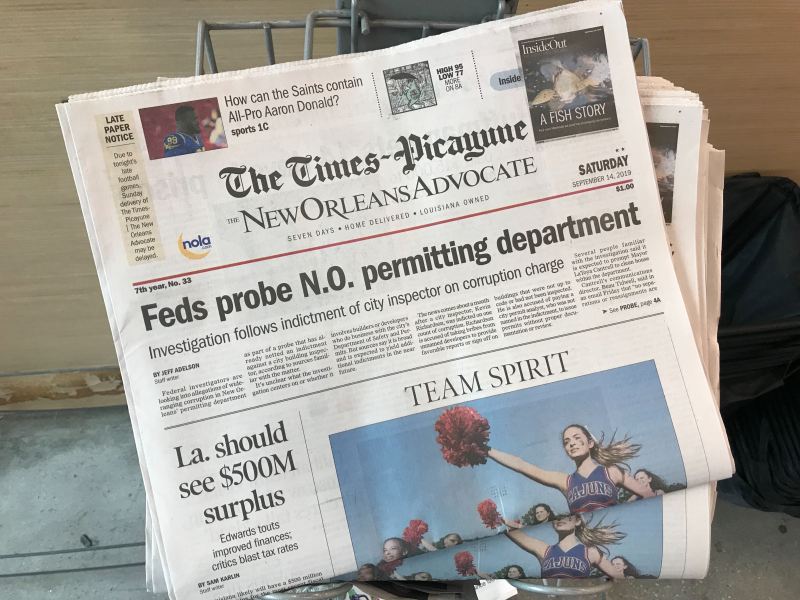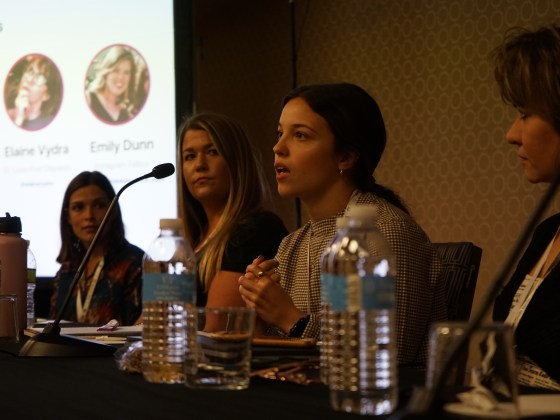The story of The Times-Picayune and The New Orleans Advocate is familiar to journalists: a “newspaper war,” a purchase, a merger, and a conglomeration. But for journalists and readers in the Crescent City, the repercussions of the loss of The Times-Picayune is still being felt.
In May 2019 the owners of The Advocate announced they bought The Times-Picayune in a move that brought attention to the city’s media landscape and left journalists without jobs. But not everyone was completely surprised by the move back to one paper.
“The community was extraordinarily well-served by the competition, but there simply wasn’t enough money in the market … to sustain both,” former editor of NOLA.com and The Times-Picayune Mark Lorando wrote in an email. “Something had to give.”
For Kristen Hare, who reports about the transformation of local news for the Poynter Institute, this particular situation was a story about ownership.
“Local newsrooms can do all of the right things, but at the end of the day, the person or company or hedge fund that owns you is sort of the master of your fate,” she said. “And what happened in New Orleans, I think, was a really good example.”
Advance Local owned The Times-Picayune. In 2012, the company started to retool the Times-Picayune to become a multimedia storyteller. As part of that plan, the print paper was reduced to three days per week.
The Advocate, which had been solely a Baton Rouge newspaper, saw an opportunity and expanded to a daily edition in New Orleans in October 2012. Owners Dathel and John Georges bought The Advocate in 2013 after a failed bid to buy The Times-Picayune.
Rick Edmonds, media business analyst at Poynter, said he thinks the papers competed on just about every dimension — from news to advertising to audience.
“I think it had to do with who got the best coverage, and that could be breaking a story or who did the best report on the Saints game,” he said.
But Lorando, who is still employed as an editor-at-large by Advance Local, said the “newspaper war” was never really a newspaper war. He called it “a battle to preserve local journalism in New Orleans, fought by two companies with very different opinions about the right balance between print and digital.”
“But the competition captivated New Orleanians, and I think it benefited both papers that locals were talking about us constantly, and often passionately.”
For years, the two papers covered the city. Edmonds described The Advocate as “a Times-Picayune newsroom in exile since the day it launched in 2013,” in a Poynter article. And then came the announcement in May 2019.
Under the change, both brands are used on the paper’s masthead, and the two websites are combined at nola.com.
It's a new day and a fresh look for https://t.co/xKLei8A6Cr and @theadvocateno!
But some things never change: We're here to serve you, New Orleans and Louisiana with the news you want, need and — most importantly — deserve.
Some tips on what to expect: https://t.co/N0PVUZtCpa pic.twitter.com/bxGLW4TmWp
— NOLA.com (@NOLAnews) July 1, 2019
“Now that we’re back to being a one-paper town, the story line isn’t quite as compelling, and my sense is that people are more focused now on what’s being reported, rather than who’s reporting it,” Lorando said. “And that’s not a bad thing.”
But what does that mean for journalism in New Orleans?
At the end of the day, Edmonds said The Advocate still has to deal with industry-wide challenges. Hare said she hopes the paper works with the digitally savvy journalists who came from The Times-Picayune and who have a lot to teach.
“If you could combine the sensibilities of both newsrooms, New Orleans would be very well served,” Hare said.
Edmonds said he doesn’t think the sale will make a huge difference for other media organizations in the city. But having fewer journalists means having less journalism, Hare said.
Kevin Allman is the editor-in-chief of the weekly newspaper Gambit, which was also bought by the Georges family in 2018. He said reporters at Gambit have had their heads down, doing what they did before.
But the audience in New Orleans has been paying attention to journalism in the city since Hurricane Katrina because of quality reporting and because the city is a fascinating place to report about, Allman said. From food to politics to sports, the city has a lot to offer for journalists and readers.
“It’s a lot of what makes up a newspaper,” Allman said, “and we’ve got it all here.”





